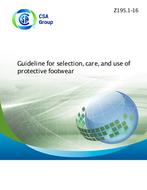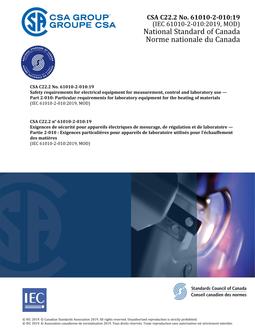Click here to purchase
This is the first edition of CSA P.9, Test method for determining the performance of combined space and water heating systems (combos).
Scope
1.1 This Standard describes the test procedures, test set-ups, and calculations required to determine the performance, capacities, energy consumption, and overall efficiency of gas-fired and oil-fired combined space and water heating systems (combos).
1.2 This Standard establishes laboratory methods for testing and rating the thermal performance and electrical energy use of a combo using a consistent test set-up and the same ambient temperature and control settings for all function tests.
1.3 In this Standard the performance of a combo is characterized by a thermal performance descriptor that consolidates measurements for space heating and water heating to provide an annual thermal performance rating. The water heating load that is incorporated into the thermal performance rating is standardized and the space heating load used in the overall rating is based on the space heating capacity of the combo.
1.4 This Standard applies to forced-air packaged combo systems and combo designs/configurations with heat inputs up to and including 87.9 kW (300 000 Btu/h) for boiler-based systems and a maximum input up to and including 73.2 kW (250 000 Btu/h) for water-heater-based systems that are intended for field assembly.
1.5 The following categories of combo systems are covered in this Standard: (a) Type A System: a combo with a fixed capacity for space heating; (b) Type B System: a combo equipped with controls that automatically adjust the space heating capacity based on the space heating load; and (c) Type C System: a combo with a thermal storage tank or equivalent that decouples the space heating load from the burner control.
1.6 This Standard does not apply to (a) electric- and solar-based combo systems; (b) solid-fuel-based combo systems; and (c) multi-family dwellings with a central heating plant.
1.7 The requirements of this Standard are expressed in SI units. The US customary values in parentheses are approximate and for information only.
1.8 In CSA standards, “shall” is used to express a requirement, i.e., a provision that the user is obliged to satisfy in order to comply with the standard; “should” is used to express a recommendation or that which is advised but not required; and “may” is used to express an option or that which is permissible within the limits of the standard. Notes accompanying clauses do not include requirements or alternative requirements; the purpose of a note accompanying a clause is to separate from the text explanatory or informative material. Notes to tables and figures are considered part of the table or figure and may be written as requirements. Annexes are designated normative (mandatory) or informative (nonmandatory) to define their application.
Product Details
- Published:
- 01/01/2011
- ISBN(s):
- 9781554914876
- Number of Pages:
- 96
- File Size:
- 1 file , 2 MB
- Product Code(s):
- 2421053, 2421360, 2421053


